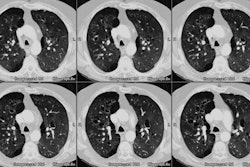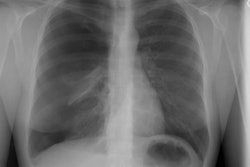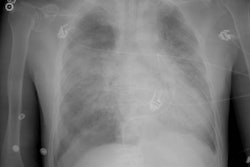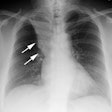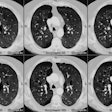Radiology 1996 Sep;200(3):665-671. Sliding thin slab, minimum intensity projection technique in the diagnosis of emphysema: histopathologic-CT correlation.
Remy-Jardin M, Remy J, Gosselin B, Copin MC, Wurtz A, Duhamel A
PURPOSE: To assess the accuracy of sliding thin slab, minimum intensity projection technique in the detection of emphysema. MATERIALS AND METHODS: In 29 patients without radiographic evidence of emphysema and who were undergoing lung resection, focal spiral computed tomography (CT) was performed in the lobe to be resected. Ten contiguous 1-mm-thick CT scans and sliding thin slab, minimum intensity projection images with slab thicknesses of 3-, 5-, and 8 mm were generated. From each image, the presence and extent of emphysema were recorded before histopathologic analysis was performed. To familiarize readers with the appearance of normal lung parenchyma on sliding thin slab, minimum intensity projection images, five asymptomatic volunteers underwent scanning with a similar protocol. RESULTS: Emphysema was present on both thin-section CT scans and sliding thin slab, minimum intensity projection images in 13 patients. In all cases, sliding thin slab, minimum intensity projection images improved conspicuity of small areas of hypoattenuation. When thin-section CT scans were negative (n = 16), sliding thin slab, minimum intensity projection images enabled identification of focal zones of hypoattenuation in four cases with histologic confirmation of emphysema. Sensitivity of thin-section CT (62%) and sliding thin slab, minimum intensity projection technique (81%) were significantly different (P < .01); specificity for both was 100%. Emphysema was easier to detect on 8-mm-thick slabs because of better suppression of vascular structures. CONCLUSION: The sliding thin slab, minimum intensity projection technique enabled improved detection of mild forms of emphysema.
PMID: 8756912, MUID: 96347832
